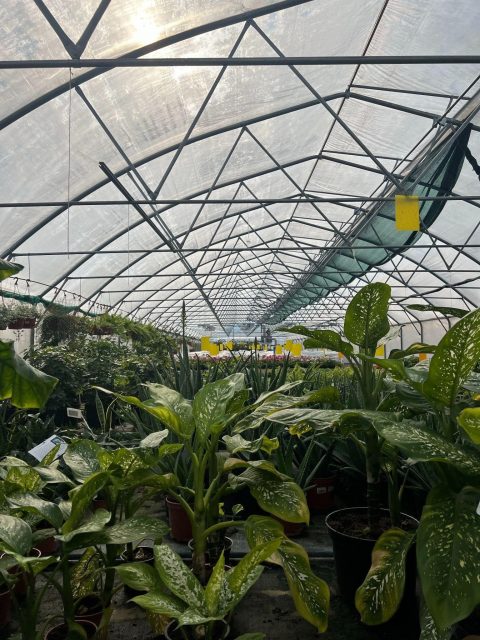Growing plants in a greenhouse increases the consistent season of plants. It helps you to start gardening sooner in the springtime and to maintain your flowers flowering longer in the autumn. Heated greenhouses offer a year-round growth season. Most greenhouses depend on solar heat and illumination, however electric heating and illumination sources are also a possibility.
The fact is, greenhouses by Prospiant provide flowers the luxury of placing their roots in an appropriate soil combination designed for each particular bloom. Warmth, dampness and precipitation are on a set timetable. The plants in a greenhouse remain shielded from the harsher weather outdoors.
Growing blooms in a greenhouse increases the growth season of the plants
Heated greenhouses offer a year-round growth season. Many plants grow incredibly well in greenhouses year-round. A small sampling of some plants that can be grown perfectly in a greenhouse follows.
The Chenille
Chenille plant, also known as Acalypha hispida, is a flowering shrub that may grow up to five or six feet in height. The stems are covered with oval, green leaves that range from 6 to 8 inches in length. The flowers have the appearance of cattails and create clusters that are 18 inches long and fall downward. The female plants produce these vivid red cattails, which only emerge on those plants. Chenille plants are versatile and may thrive in almost any kind of soil provided the soil has enough drainage for the plant. After the plant has finished producing flowers, do any necessary pruning to get it back to the appropriate size.
The Chinese Hibiscus
The Chinese hibiscus, also known as Hibiscus rosa sinensis, is a blooming plant native to tropical climates that is very sensitive to cold. The margins of the glossy, green leaves are just a little bit ruffled. Summertime flowers come in a variety of colors, including white, fuchsia, red, yellow, apricot, and orange. The diameter of the blooms ranges from 2 to 20 centimeters. These flowers barely survive one day before they begin to wilt and die. It is important to provide the Chinese hibiscus with enough water and soil that drains properly and is rich in nutrients.
Curcuma Plant
Ginger, turmeric, and curcumin are all members of the same plant family that curcuma plants belong to. The rhizomes of the curcuma plant are the source of these spices. Rhizomes are the section of the stem that are buried underground and send out roots. Gardeners like their wide, luxuriantly green foliage as well as their beautiful blossoms that resemble cones. These plants are native to India and thrive in warm, humid environments. In addition, curcuma plants may be grown successfully as houseplants if the appropriate level of care and attention is supplied.
If you reside in an area where the nighttime temperature falls below 60 degrees Fahrenheit, you should bring your curcuma plants indoors and place them near a window that gets a lot of natural light.
In order to raise the humidity surrounding your turmeric plant, fill the tray with gravel, then add water until it reaches the same level as the gravel. Put the flower in its flower pot and set it on the table. As the water evaporates, top it over with fresh water as necessary.
Vegetables
Crops that are grown during the cold season and those that are grown during the warm season are the two primary categories that are used to classify vegetables. Cold frameworks and unheated outdoor greenhouses are ideal environments in which to cultivate cool-season vegetables and herbs including romaine, broccoli, peas, and carrots.
Because these plants are able to survive cool evenings, it is not required to use heating while cultivating them, except if you’re in a region where temperatures often drop to very low levels. Many also thrive in partially shaded environments, minimizing the need for extensive overhead illumination. Be careful to install a fan and ensure that your greenhouse has enough ventilation in case there is a particularly warm day early in the growing season.
Warm-season crops (https://extension.psu.edu/cool-season-vs-warm-season-vegetables) like zucchini, tomatoes, pumpkin, and peppers thrive best in greenhouses maintained at temperatures ranging from 55 to 85 degrees Fahrenheit (F) (12-29 C.). If you take good care of these plants and give them supplementary lighting, trellises, and hand pollination, they will reward you with delicious summertime favorites throughout the whole year.
Desert And Tropical Plants
The correct greenhouse may even accommodate desert and tropical plants like cactus and succulents. For a definition and examples of tropical plants, click here. If you pay great attention to the circumstances inside, greenhouses may be the perfect environments for growing tiny tropical plants such as orchid, Venus fly trap, and other carnivorous plants. This is especially true if you want to produce something that is more intriguing.
Ornamental Plants
Ornamentals can be categorized into sun- or shade-loving annual crops and perennial, and then further subdivided based on the amount of humidity they need or any number of other distinguishing characteristics. The following are some other popular choices for decorative and landscaping plants:
sPoinsettias
Geraniums
Petunias
Salvia
Ferns
Chrysanthemums
Pansies
Caladiums
Impatiens
Coleus


